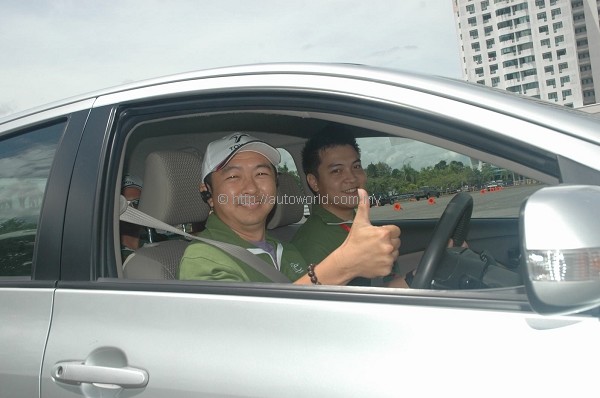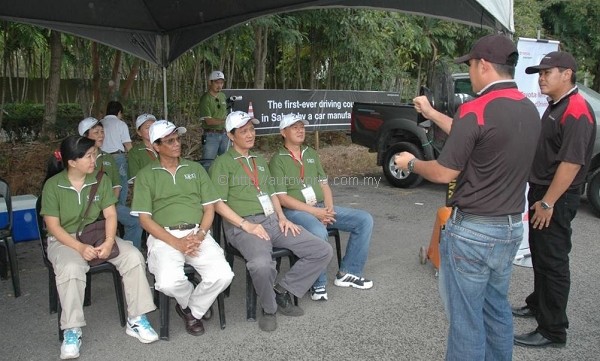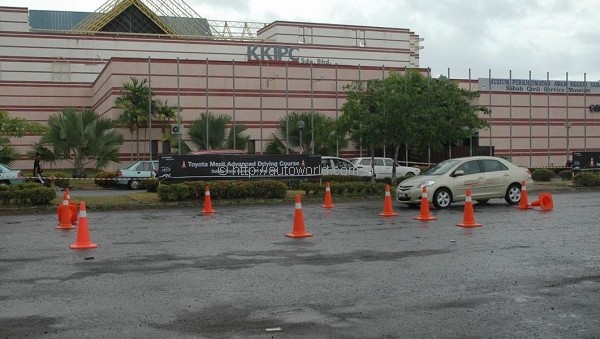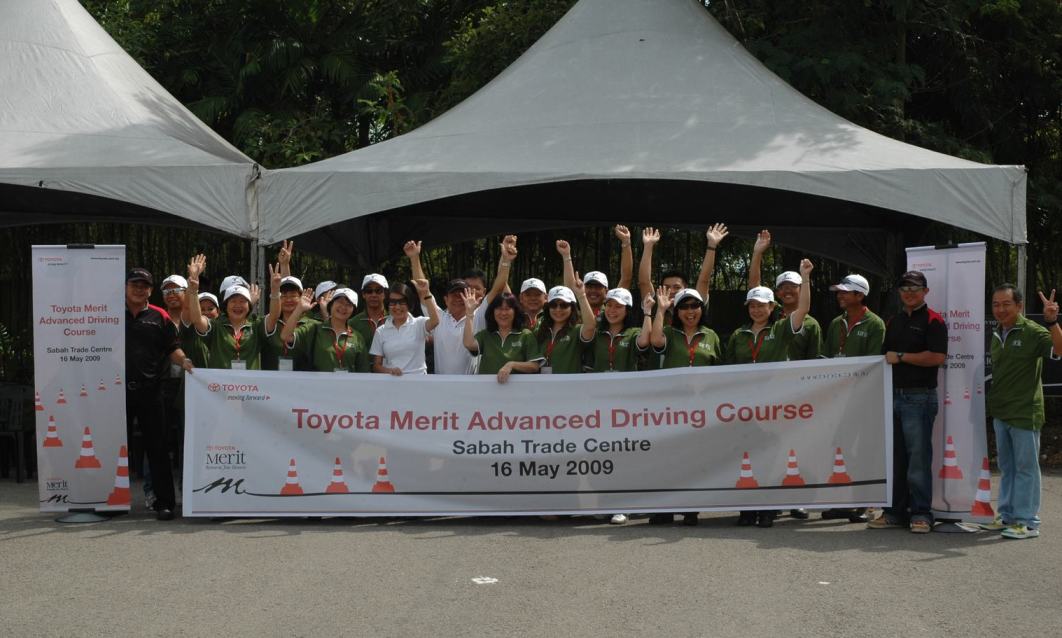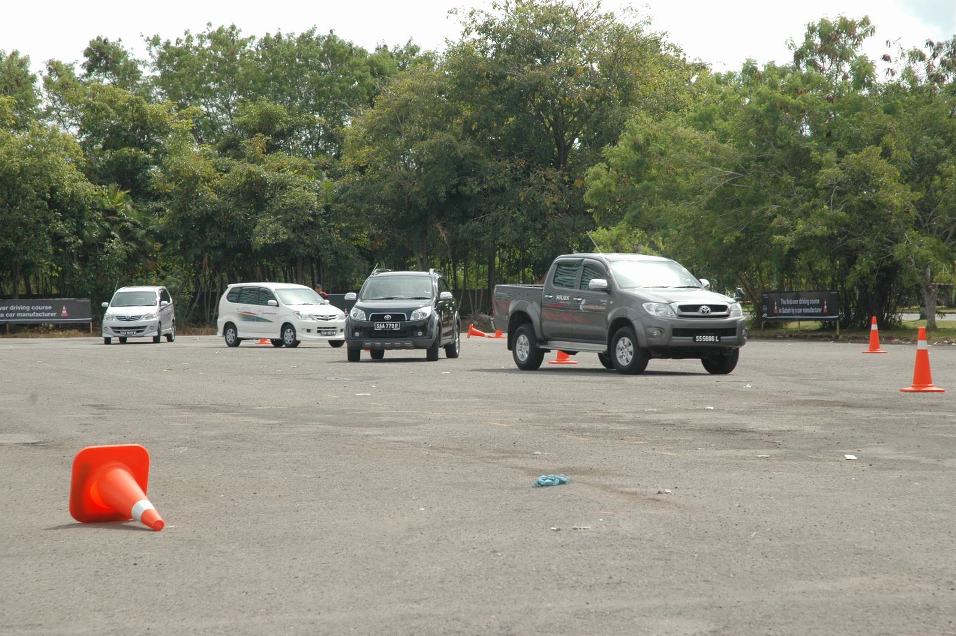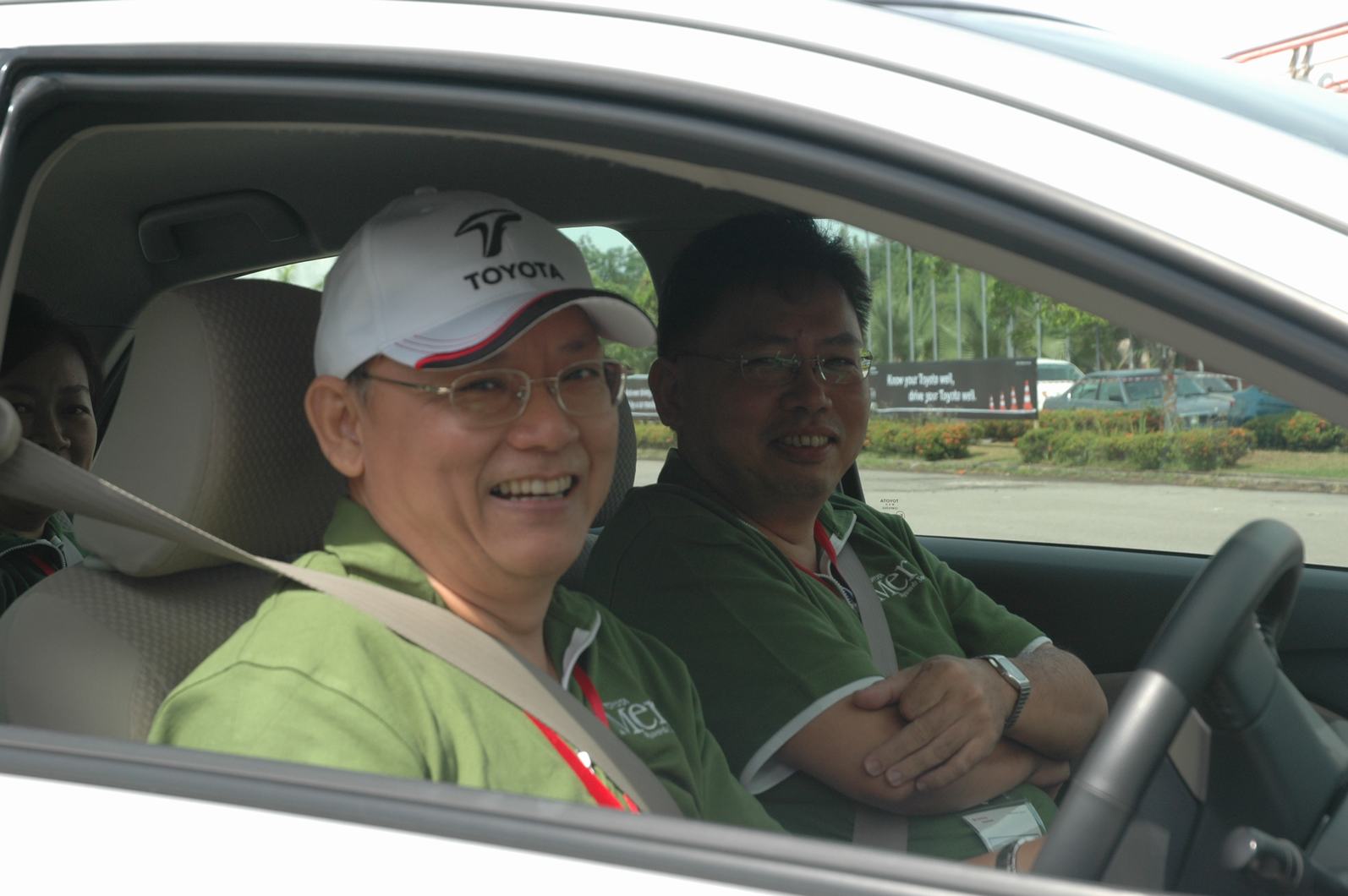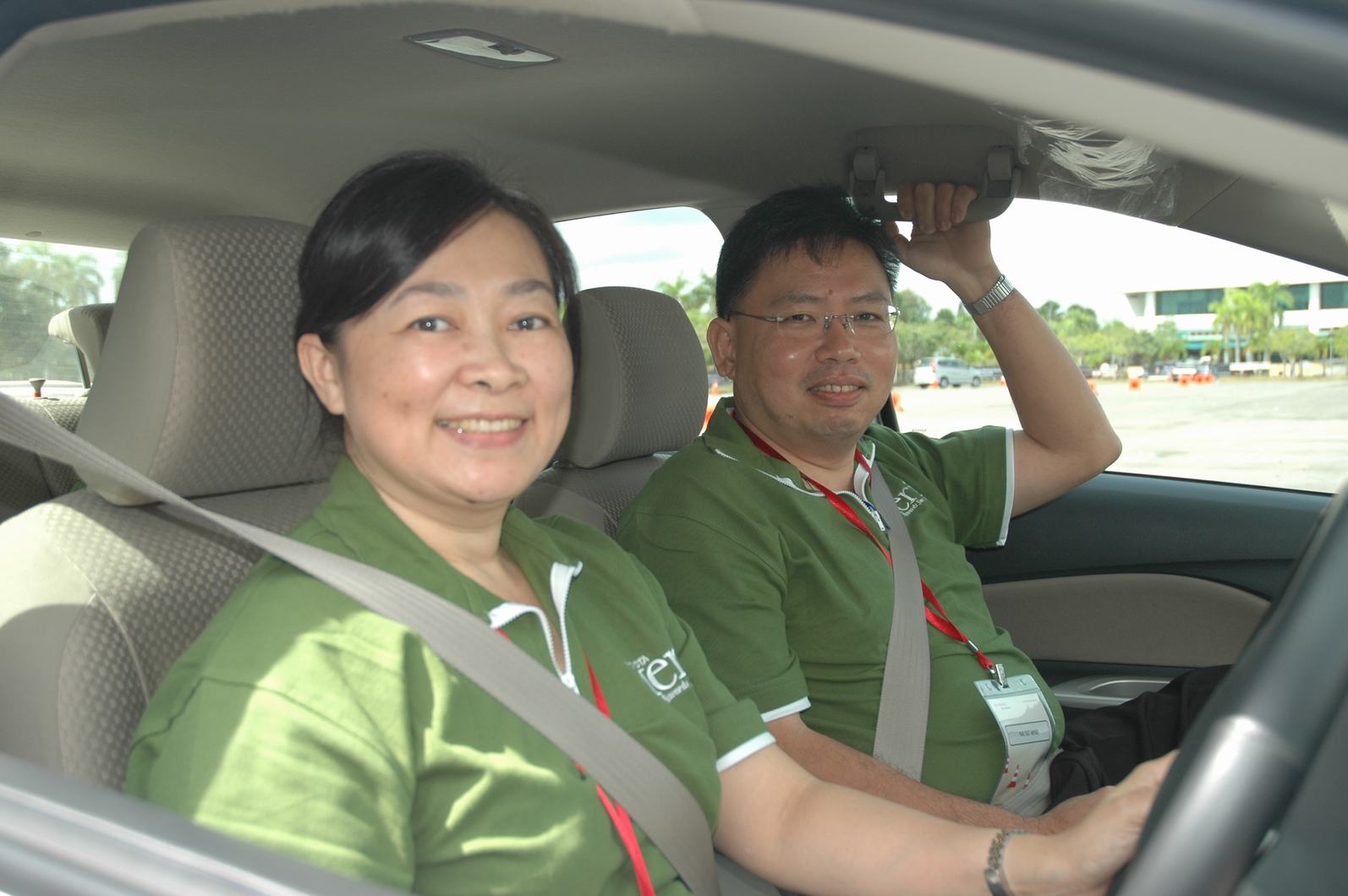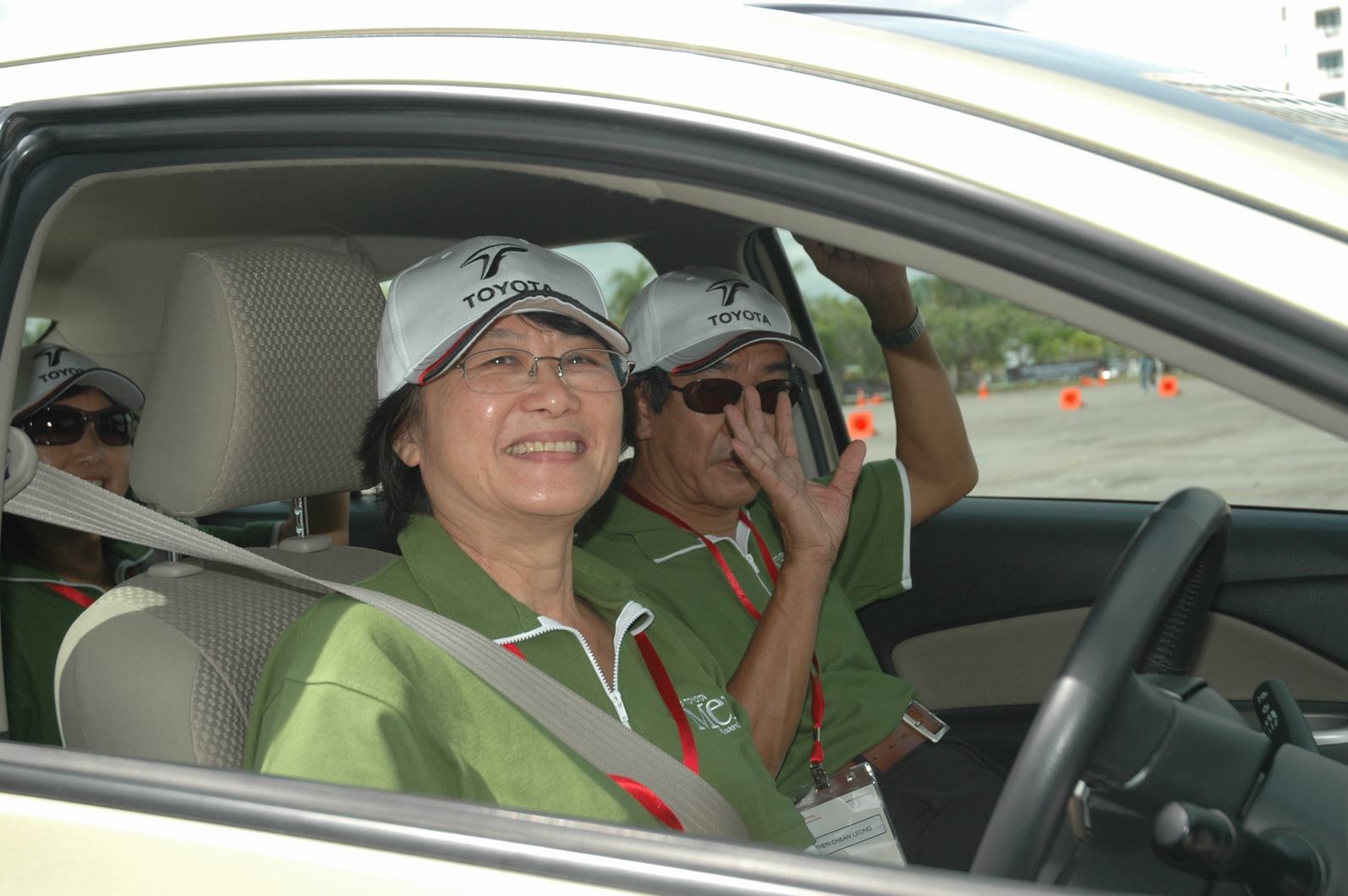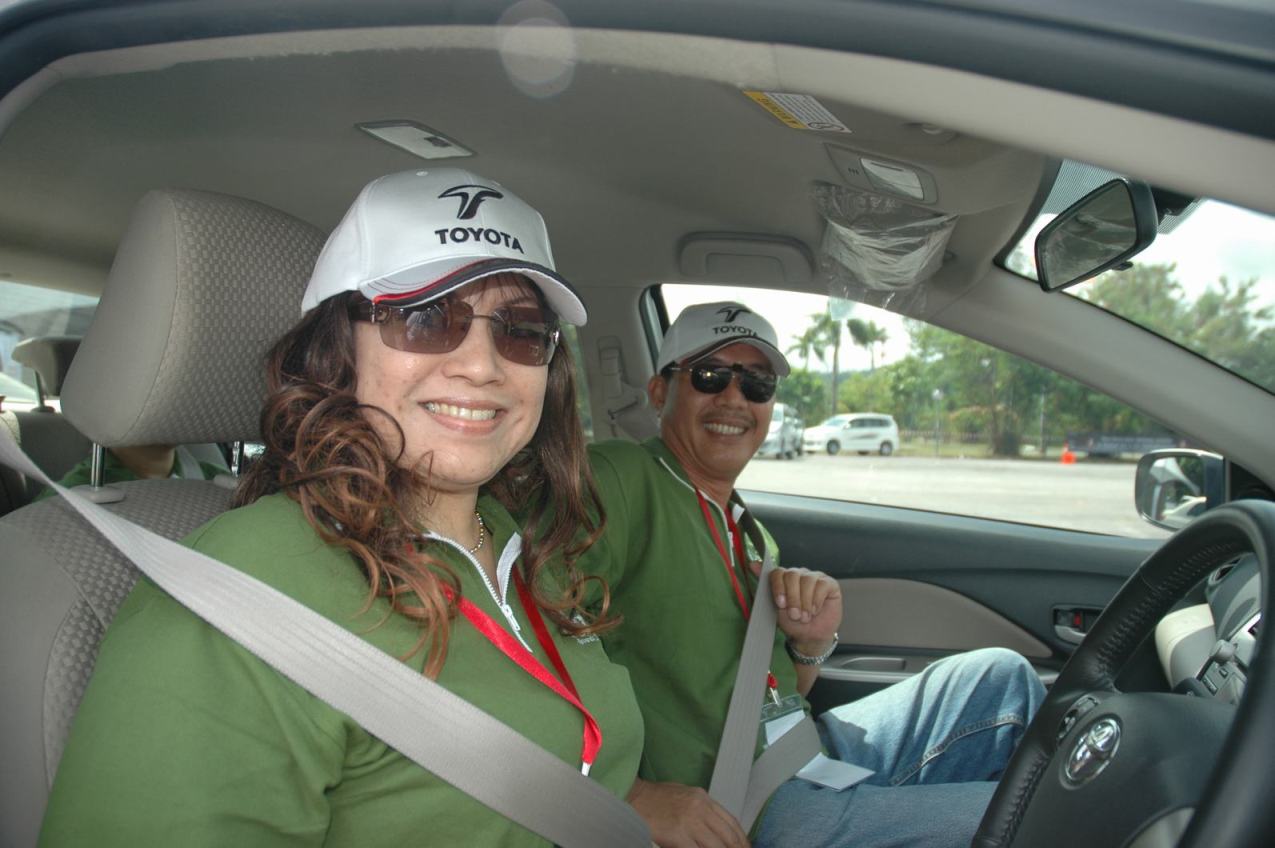Advanced Driving Comes to Kota Kinabalu
‘Sometimes, right of way has to be sacrificed in the interests of safety”, says the YS Driving Academy instructor at the Toyota Merit Advanced Driving Course held in Kota Kinabalu on 16th May, a CSR project initiated by UMW Toyota Motor Sdn Bhd as a reward for its loyal customers in Sabah Malaysia. It is also the very first advanced driving course held by a car manufacturer in Sabah, and it was welcomed heartily by the participants. It is also the second of such courses organized by UMW Toyota motor Sdn Bhd.
The beneficiaries of this course were 34 very ‘gung ho’ Toyota owners, ranging from the age of 25 to 74 years or age, all of whom thoroughly enjoyed themselves learning survival skills and how to keep themselves and their loved ones safe while on the road. On hand were 5 race and rally drivers to give personal guidance to each and every participant.
Participants are on an invitational basis, and the criterion for selection is the consistency of each customer’s service visits to UMW Toyota service and parts outlets over a period of time. Ms Tan Li Li, General Manager, CRM, stated that in addition to improving customers’ driving skills, the Advanced Driving Course is also part of UMW Toyota’s Corporate Social Responsibility activities as it serves to uplift the standard of driving in the nation.
The Advanced Driving Course was held at the car park area outside of the Sabah Trade Centre, just two kilometres from the city centre, with the area cordoned off using safety barriers; the course was laid out using road safety cones that would minimise damage to the car bodywork in the event that any participant should, in the practical sessions, make a mistake and get off the marked out track.
There are many aspects related to driving, and it is impossible to cover all subjects in a single day; thus the course was centred on selected key and basic subjects aimed generally at improving car control skills designed to equip all the participants with abilities to avoid accidents and unpleasant incidents whilst on the road.
Just as it is necessary to learn a proper stance in kung-fu before kung-fu can be effectively practised, or to learn the proper way to hold a pair of chopsticks before one can use them properly, it is necessary to sit in the proper position before learning to drive. Whereas normal driving schools, due to the large numbers of people they process, generally concentrate more on ensuring a high passing rate amongst learner drivers, the Toyota Merit Advanced Driving Course takes the driving lesson up several levels by introducing drover training programmes that are designed to improve driving skills to such a level that they become intuitive and instinctive, at the same time ensuring that the driver has the best chance of surviving an impact with another vehicle.
For instance, in the sitting position demonstration, the driver has to adjust his seat height and the distance to the control pedals; the ideal position has to be a comfortable and natural position, and with the right foot depressing the brake pedal fully, the knee must remain slightly bent. As explained by the chief instructor, during an impact, the chances that the driver would have his foot full on the brake pedal is high, as he or she is probably braking hard to avoid an impact, and if it should still happen, then a bent knee joint will allow the leg to bent upon impact, whereas a fully stretched out leg would break.
Similarly, the arms should be slightly bent when holding the steering at the ten-to-two position. The arm position is adjusted using the tilt and telescopic adjustments of the steering wheel together with the seatback rake adjustment. In addition, with the shoulders against the seatback, the driver’s fully stretched out arms should touch the top of the steering wheel at the wrists.
Next is the hand placement on the steering, and the participants were advised to maintain a ten-to-two position on the straight, and use a push-pull combination to manoeuvre, feeding the steering gradually into each turn, taking care not to turn more than necessary, and remembering to ‘uncurl’ the steering as one exits a turn. There is an alternative method called the ‘hand-over-hand’ method, but for road cars with steering ratios that are not as close as those in racing cars, the push-pull method appears to be the better way.
On the subject of cornering, participants were taught the theory of cornering lines, which explained the ideal line through a corner; basing on the accepted fact that acceleration in a straight line is always faster than acceleration in a curve, it stands to reason that if one can straighten the vehicle earlier when exiting a corner, then one could get through any circuit faster or attain a higher speed out of a corner. The chief instructor also stated that the correct entry speed into a corner is important, as most off-the-road situations are the direct result of entering a corner at excessive speed.
Part of the theory session also included a number of driving tips for ladies, such as discouraging the use of high heels for driving, no placing of shoes and handbags in the driver’s compartment for fear of items moving forward and hampering the depression of the brake pedal, and to keep one’s feet off the clutch pedal whilst driving.
After the theory session, participants went for the practical exercises to put into practice what they had learnt. Over a slalom course, participant had a chance to use their newly-found hand placement skills, whiles elsewhere, others were having some fun and excitement going through a brake, steer and avoid exercise, designed to inculcate instinctive reactions in emergency situations. The instructors gave demonstrations for each exercise, after which they closely monitored each driver, giving instant feedback and correcting errors from the participants as soon as it happened.
To wrap it up, a friendly slalom competition was organized, to enable the participants to put together everything that they had learnt into a race against the clock. At the end of the day, certificates of participation were awarded to all participants.
As a person who takes driving very seriously, and who spends a lot of time on the road, I think that there should be more courses such as this, as my every day experience indicates that there are still many people who are really lost when it comes to driving properly. It seems a huge task, but how do you eat an elephant? One mouthful at a time….




